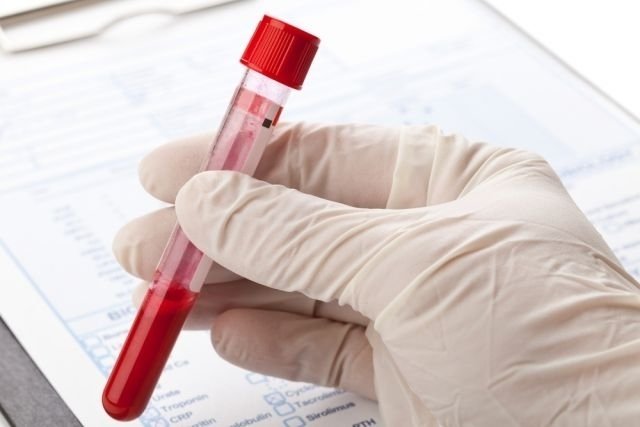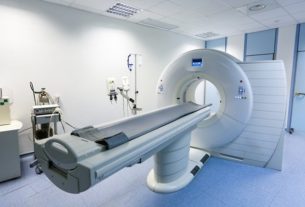The VHS test is a blood test widely used to detect any inflammation or infection in the body, which can indicate anything from a simple cold, bacterial infections, to inflammatory diseases such as arthritis or acute pancreatitis, for example.
The ESR test, also called the Erythrocyte Sedimentation Rate or Red Blood Cell Sedimentation Rate test, is carried out by collecting a blood sample, which is processed and evaluated after 1 hour by the laboratory with the aim of evaluating the speed at which red blood cells separate from the liquid part of the blood.
The normal value of ESR in men is up to 15 mm and in women up to 20 mm. Values above the reference value are considered indicative of infection or inflammation, making it necessary for other tests such as blood count and C-reactive protein (CRP) measurement to be carried out so that the cause of the change can be identified more precisely.

What is it for
The ESR test is used to identify or evaluate any type of inflammation or infection in the body, as it measures the speed of separation between red blood cells and plasma, which is the liquid part of the blood, by the action of gravity. Thus, when there is an inflammatory process in the bloodstream, proteins are formed that reduce the viscosity of the blood and accelerate the erythrocyte sedimentation rate, resulting in a high ESR.
Therefore, the VHS is a very sensitive test, as it can easily detect inflammation, but it is not very specific, that is, it is not able to indicate the type, location or severity of the inflammation or infection that occurs in the body. Therefore, ESR levels must be evaluated by the doctor, who will identify the cause according to clinical evaluation and the performance of other tests, such as PCR, which also indicates inflammation or blood count, for example.
How is done
To perform the VHS test, the laboratory will collect a blood sample, which is placed in a closed container and then it will be assessed how long it takes for the red blood cells to separate from the plasma and settle at the bottom of the container.
Thus, after 1 hour or 2 hours, this deposition will be measured in millimeters, which is why the result is given in mm/h. To perform the VHS test, no preparation is necessary, and fasting is not mandatory.
Reference values
The VHS test reference values are different for men, women and children:
Currently, the VHS test values in the first hour are the most important, which is why they are the most used.
The more intense the inflammation, the more the ESR can rise, and rheumatological diseases and cancer can cause inflammation so severe that they are capable of increasing the ESR above 100 mm/h.
What does the result mean
The VHS result may be indicative of the following situations:
1. VHS alto
The situations that normally increase ESR are viral or bacterial infections, such as flu, sinusitis, tonsillitis, pneumonia, urinary tract infection or diarrhea, for example. However, it is widely used to evaluate and control the evolution of some diseases that alter their outcome more significantly, such as:
- Polymyalgia rheumatica which is an inflammatory disease of the muscles;
- Temporal arteritis which is an inflammatory disease of the blood vessels;
- Rheumatoid arthritis which is an inflammatory disease of the joints;
- Vasculitis, which is inflammation of the blood vessel wall;
- Osteomyelitis which is an infection of the bones;
- Tuberculosis which is an infectious disease;
- Cancer.
Furthermore, it is important to remember that any situation that changes the dilution or composition of the blood can alter the test result. Some examples are pregnancy, diabetes, obesity, heart failure, kidney failure, alcoholism, thyroid disorders or anemia.
2. Low VHS
A low ESR test generally does not indicate changes. However, it is important to remember that there are situations that can keep ESR abnormally low, and confuse the detection of inflammation or infections. Some of these situations are:
- Polycythemia, which is an increase in blood cells;
- Severe leukocytosis, which is an increase in white blood cells in the blood;
- Use of corticosteroids;
- Hypofibrinogenia, which is a blood clotting disorder;
- Hereditary spherocytosis is a type of anemia that is passed from parents to children.
Therefore, the doctor must always see the value of the VHS test and analyze it according to the person’s clinical history, as its result is not always compatible with the health situation of the person evaluated. The doctor may also use newer and more specific tests, such as PCR, which usually indicates situations such as infection more specifically. Find out what the PCR test is and how it is done.
Bibliography
- HACHEN, Rabih H et al. Erythrocyte sedimentation rate (ESR) without dilution: reliable methodology?. Academic Vision. Vol 11. 2 ed; 2010
- COLLARES, Guilherme B.; VIDIGAL, Pedro G. Recommendations for using erythrocyte sedimentation rate. Rev Med Minas Gerais. Vol 14. 1 ed; 52-57, 2004

Sign up for our newsletter and stay up to date with exclusive news
that can transform your routine!
Warning: Undefined array key "title" in /home/storelat/public_html/wp-content/plugins/link-whisper-premium/templates/frontend/related-posts.php on line 12
Warning: Undefined array key "title_tag" in /home/storelat/public_html/wp-content/plugins/link-whisper-premium/templates/frontend/related-posts.php on line 13



